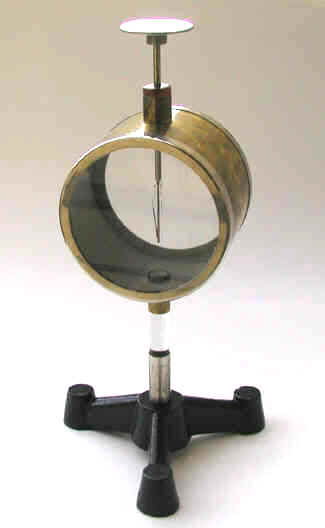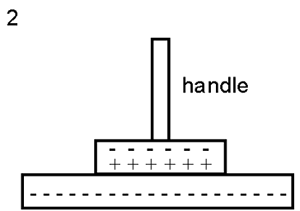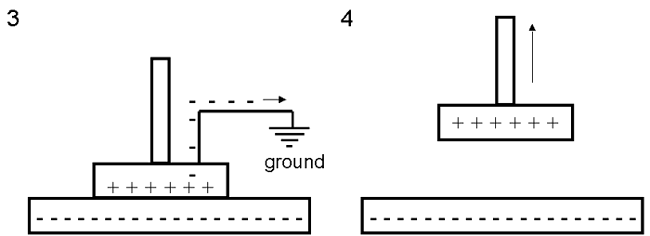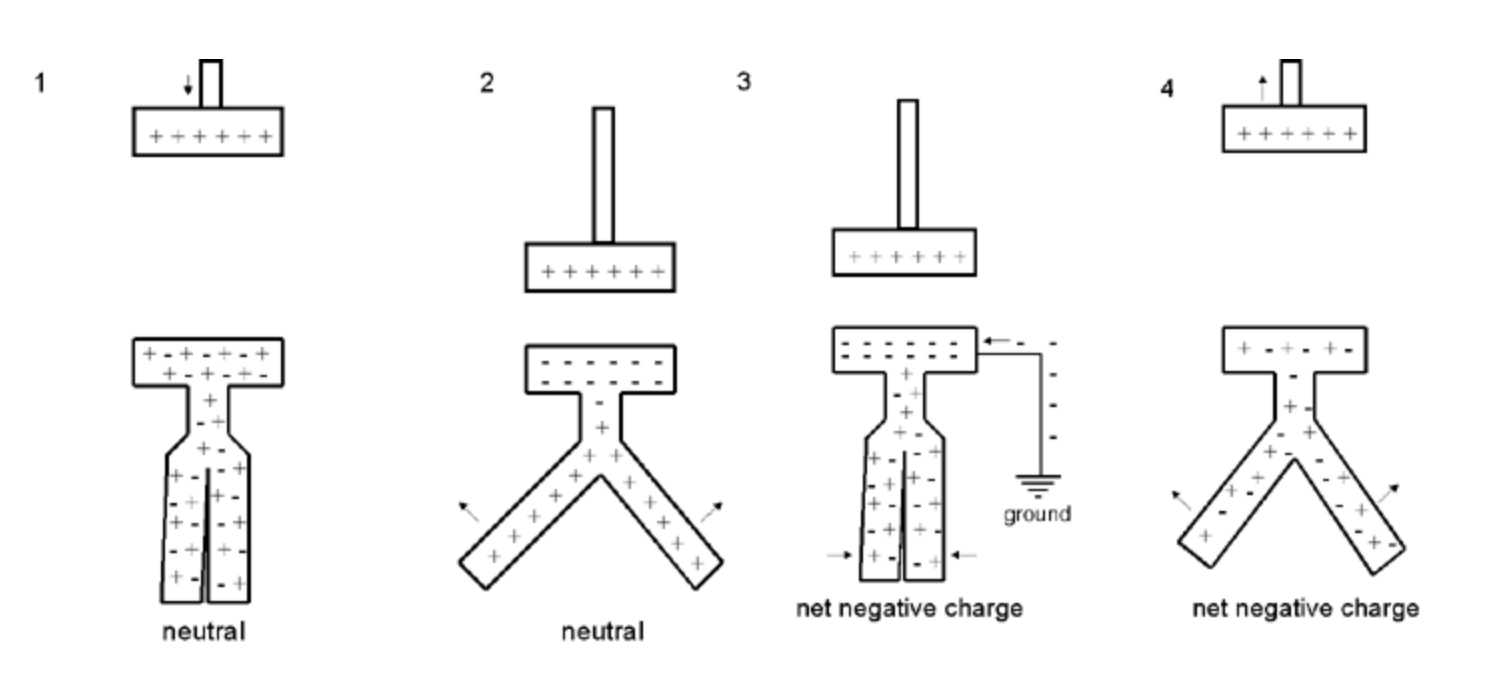Cylindrical Beetz-type Electroscope (early 1900s)

This is a cylindrical electroscope for qualitative demonstrations of electrostatic phenomena. That it was manufactured in Czechoslovakia is indicated by the following inscription on the condenser plate: F. KMENT PRAHA.
Electroscopes employing a cylindrical design like this one are often attributed to W. Beetz. For example, the 1908 Philip Harris catalog refers to a similar electroscope as follows: “Electroscope, Beetz’s form.”
The body is made of brass, the condenser plate is steel, and the insulator for the brass conduction rod is amber.
The two aluminum leaves at the bottom of the conducting rod are separated by a vertical plate which prevents them from touching each other. This feature permits the electroscope to be operated with either one or two leaves.
The supporting post beneath the body of the electroscope employs glass which would seem to insulate the electroscope from the base. The reason for doing so is not obvious (to me anyway).
A device known as an electrophorus would be used to transfer a charge to the condenser plate on the top.
Condensing Electroscopes and the Electrophorus
Condensing Electroscopes

The defining feature of the condensing electroscope is the flat horizontal disk on top that is connected to the electroscope leaves (or leaf). This type of electroscope is primarily intended for electrostatic measurements but it can also be used to help identify the presence of radioactive material.
A condensing electroscope is designed to be charged with the disk of a device known as an electrophorus. The dimensions of this disk are the same as those of the fixed disk on top of the electroscope. The handle of the electrophorus disk is a glass (or other insulating material) rod projecting at right angles from the back side of the disk.
Charging the Electrophorus Disk

To begin, a charge must be generated on an insulating plate once known as the cake—this plate is considered part of the electrophorus. The charged plate (Figure 1) should have a smooth surface and be made from an insulating material (Teflon is perfect but plexiglass is a good choice). The plate is charged via friction by rubbing it with a material such as wool, silk or fur. Depending on the materials used, the resulting charge on the plate would be either negative (as shown here) or positive. The back (down) side of the insulating plate might, or might not, be in contact with a conductor that is grounded.

Next, the neutral electrophorus disk is brought in contact with the insulating plate. For the purpose of this discussion, the plate is assumed to have a negative charge. Although they are in contact, the plate does not transfer a charge to the disk because the plate is an insulator. Nevertheless, there is a spatial separation of the positive and negative charges in the disk: the negative charges (electrons) are repelled to the up side of the disk farthest away from the plate thus leaving a positive charge on the down side of the disk that is in contact with the charged plate (Figure 2).
Next, the disk is grounded, e.g., by touching the top of the disk with a finger. This causes the electrons to travel to ground leaving the disk with a net positive charge (Figure 3). Finally, the ground is removed and the electrophorus disk lifted away from the insulating plate (Figure 4).

Charging the Electroscope with the Electrophorus Disk by Conduction
There are two methods that can be used to charge the electroscope: by conduction and by induction.
To charge the electroscope by conduction, the electrophorus disk, which in this example has a positive charge, is brought into physical contact with the fixed disk on the electroscope Figure 3 below). Since electrons from the electroscope are drawn to electrophorus disk, the electroscope disk and leaf will be left with a net positive charge, the same charge as that on the electrophorus.

Charging the Electroscope with the Electrophorus Disk by Induction
More control of the charge transferred to the electroscope can be obtained by charging it by induction in the following manner. The charged electrophorus disk is brought close to the fixed disk of the electroscope but the two are not allowed to touch. When the electrophorus disk is brought close, the electroscope leaves will separate. The reason is that the electrons are attracted to the upper surface of the electroscope disk, the side closest to the electrophorus, leaving the leaves with a positive charge. Since both leaves have the same charge, they separate (Figure 2). By moving the electrophorus disk away from or closer to the electroscope disk, the desired separation of the leaves can be obtained. Next the electroscope disk is grounded, e.g., by touching it. The electrons then travel to the disk leaving the electroscope with a net negative charge (Figure 3). The ground is removed (Figure 4) and the electrophorus lifted away from the electroscope leaving the electroscope with a net negative charge.

For additional information, check out our other Beetz-type electroscope.
Size: ca. 13” tall. The chamber is 4" in diameter and 3.25" deep.
Reference
Philip Harris and Co., Ltd. An Explanatory Price List of Physical Instruments for Experimental Science. 1908.
